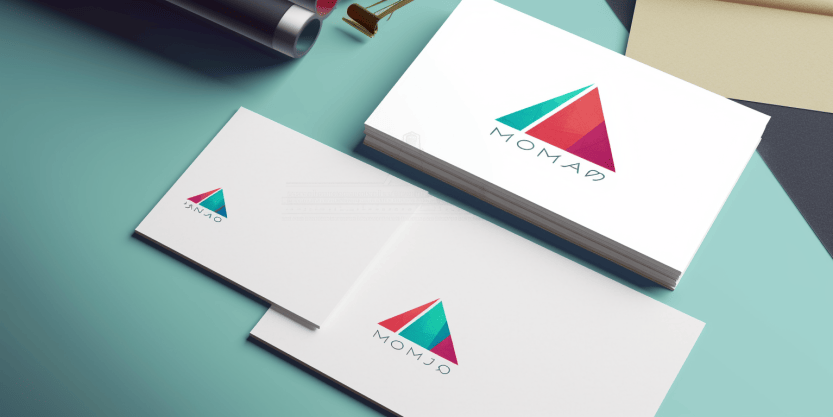In the ever-evolving realm of business, where consumer preferences, market dynamics, and technological landscapes undergo constant transformations, the ability of a brand to adapt becomes paramount. One of the potent tools in a company’s arsenal to navigate these shifts successfully is rebranding. A crucial aspect of this strategic process is the revision of the logo – the visual embodiment of a brand’s identity. In this article, we will delve into the intricacies of rebranding, exploring not only the signs that indicate the necessity for a brand makeover but also the step-by-step process involved. Through insightful case studies, we will witness real-world examples of successful rebranding efforts, gaining valuable lessons that can guide businesses contemplating a transformation. By the end of this exploration, readers will have a comprehensive understanding of when and how to embark on the journey of revising their logo, ensuring that the essence of their brand remains not only relevant but resonant in the minds of their target audience.
Signs You Need to Rebrand
Recognizing the signs that signal the necessity for a rebranding initiative is akin to having a compass that guides a company through the ever-shifting tides of the business landscape. One of the prominent indicators is a decline in market share, suggesting a potential disconnect between the brand and its audience. Additionally, if a brand’s image feels outdated or no longer resonates with its target demographic, it may be time to consider a rejuvenation of the brand identity.
Moreover, changes in the competitive landscape can demand a reassessment of a brand’s positioning and differentiation strategy. A brand that once stood out may find itself blending into the background as competitors evolve. Similarly, shifts in consumer behavior, preferences, or societal values can create a misalignment between the current brand identity and the expectations of the target audience.
Furthermore, mergers, acquisitions, or significant internal changes within a company can necessitate a rebranding effort to reflect the new identity and aspirations. Whether prompted by external market forces or internal shifts, a proactive approach to recognizing these signs positions a company to adapt and thrive in an ever-changing business environment.
The logo maker Turbologo allows you to save your logo in the cloud for future access.
Rebranding Process
Once the decision to embark on a rebranding journey has been made, the subsequent steps involve a meticulous process aimed at not only refreshing the brand but also ensuring a seamless transition for both internal and external stakeholders.
Assessment and Research are the initial pillars of the rebranding process. Conducting a thorough analysis of the current brand’s strengths and weaknesses provides a foundation for decision-making. Market research, including surveys and focus groups, aids in understanding customer perceptions and preferences, offering valuable insights into the necessary directions for change.
Defining Objectives and Goals follows closely, as a clear roadmap is essential for a successful rebranding effort. Whether the objective is to expand the target audience, update the brand image, or align the brand with evolving company values, establishing specific, measurable, and achievable goals provides a framework for the entire process.
Designing a New Logo is a pivotal stage in the rebranding process, often serving as the visual linchpin of the brand makeover. Collaboration with skilled graphic designers or branding agencies is crucial to craft a logo that not only reflects the brand’s essence but also resonates with the target audience. Striking the right balance between innovation and maintaining brand continuity is key.
Implementing Changes Gradually is a strategy that mitigates the potential risks associated with abrupt transformations. Whether updating marketing materials, signage, or digital assets, a phased approach allows stakeholders, both internal and external, to acclimate to the evolving brand identity without causing confusion or alienation.
Communication and Marketing form the final crucial phase of the rebranding process. Transparent communication with all stakeholders is paramount. Crafting a compelling narrative explaining the reasons behind the rebrand, the positive changes it brings, and how it aligns with the brand’s core values fosters understanding and support. An integrated marketing campaign, encompassing both traditional and digital channels, helps broadcast the rebrand to the wider audience, solidifying the new identity in the minds of consumers.
This structured approach to the rebranding process ensures that every step is intentional, research-backed, and strategically aligned with the overarching goals of the brand makeover. It is through this systematic methodology that companies can successfully navigate the intricate terrain of rebranding, emerging with a revitalized and resonant brand identity.

Case Studies
Examining real-world examples of successful rebranding efforts provides invaluable insights into the strategies and considerations that contribute to a triumphant transformation.
One compelling case study is the 2016 rebranding of Uber. As the ride-sharing giant expanded its services beyond transportation, the company recognized the need to evolve its brand image. Uber simplified its logo and adopted a new brand color, signaling a shift from being solely a transportation service to a comprehensive mobility platform. This strategic rebrand not only communicated a change in focus but also enhanced brand recognition and customer engagement.
In contrast, the 2010 attempt by Gap to redesign its logo serves as a cautionary tale. Faced with severe backlash from customers, who had a strong attachment to the familiar blue box, Gap swiftly reverted to its original logo. This case underscores the importance of understanding and respecting existing brand equity. It emphasizes that a successful rebrand should be rooted in a deep understanding of the brand’s heritage and the emotional connection it holds with its audience.
Mastercard’s logo redesign in 2016 is another illustrative case. By removing the brand name and simplifying the iconic interlocking circles, Mastercard aimed to enhance brand recognition, especially in the digital realm. The streamlined design reflected the company’s commitment to a seamless and secure payment experience, showcasing how a well-thought-out logo revision can contribute to a brand’s adaptability in a rapidly changing business landscape.
These case studies highlight the diverse approaches companies can take when considering a rebrand. From the careful evolution of Uber’s visual identity to the respectful retention of Gap’s iconic logo and the strategic simplification by Mastercard, each case underscores the importance of aligning the rebranding effort with the brand’s narrative, customer expectations, and broader industry trends.
In conclusion, the decision to revise a logo as part of a rebranding strategy is a multifaceted process that requires careful consideration and strategic planning. By recognizing the signs indicating the need for change, following a systematic rebranding process, and drawing insights from successful case studies, businesses can navigate this transformative journey with confidence.
The dynamic nature of the business landscape demands that brands remain adaptable, responsive to evolving consumer preferences, and aligned with their own evolving values. A well-executed logo revision, as part of a comprehensive rebrand, can breathe new life into a brand, solidify its relevance in the market, and forge a stronger connection with its audience. Ultimately, the art of rebranding lies not just in the change itself but in the thoughtful orchestration of that change, ensuring that the essence of the brand continues to resonate in the hearts and minds of its consumers.
- Resolving the “Class JFactory Not Found” Error in Joomla When Upgrading to J6 - December 19, 2025
- The Utility Of VPNs For Site Authors And Admins - November 24, 2025
- Joomla! 6: What’s New and How to Upgrade from Joomla! 5 - October 23, 2025







Recent Comments